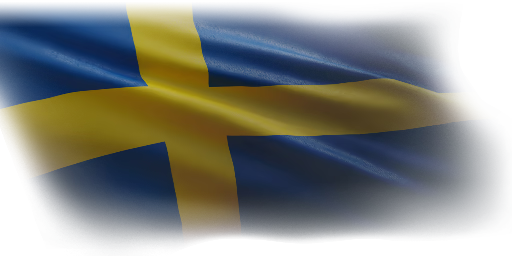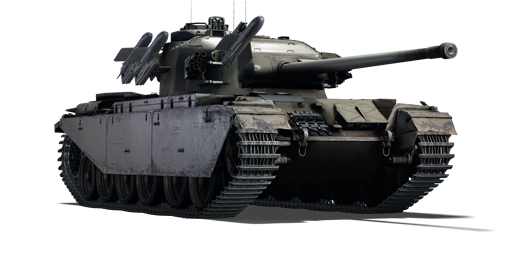



The Stridsvagn 81 (Robot 52) was a Swedish Strv 81 that was armed with the Robot 52 anti-tank guided missile (ATGM). This missile is essentially a Swedish copy of Nord Aviation's SS.11 manual command to line of sight (MCLOS) wire-guided ATGM.
Introduced in Update 1.59 "Flaming Arrows", the Strv 81 (RB 52) represents a Swedish Centurion Mk 3 fitted with RB 52 ATGMs. Its gameplay is very similar to that of modern main battle tanks. Players never have to worry about opponents appearing around corners and stopping to take aim with the two-plane fully automatic stabilization system. The availability of RB 52 ATGMs is one distinctive secondary armament that the vehicle has over the standard Strv 81. The RB 52 missiles mounted on the right side of the turret provide up to 600 mm of armour penetration. Three are immediately available for use and are directed by an MCLOS system. The missile's trajectory is such that it rises for a short distance before levelling down, producing a "dead zone" of up to 200 metres that the missile cannot fully engage in. Players who launch missiles must be constantly conscious of the distance between themselves and the enemy.
The British Strv 81 (RB 52) was removed from the store after the 2020 May sale, and an identical replacement was later introduced in the Swedish ground forces tree.
| Ammunition | Type | Armor penetration (mm) at a distance: | |||||
|---|---|---|---|---|---|---|---|
| 10 m | 100 m | 500 m | 1000 m | 1500 m | 2000 m | ||
| ATGM | 600 | 600 | 600 | 600 | 600 | 600 | |
| Ammunition | Type | Armor penetration (mm) at a distance: | |||||
|---|---|---|---|---|---|---|---|
| 10 m | 100 m | 500 m | 1000 m | 1500 m | 2000 m | ||
| APCBC | 239 | 236 | 222 | 206 | 192 | 178 | |
| HE | 20 | 20 | 20 | 20 | 20 | 20 | |
| APDS | 385 | 381 | 364 | 344 | 325 | 307 | |
| Smoke | 3 | 3 | 3 | 3 | 3 | 3 | |
| Belt | Belt filling | Armor penetration (mm) at a distance: | |||||
|---|---|---|---|---|---|---|---|
| 10 m | 100 m | 500 m | 1000 m | 1500 m | 2000 m | ||
| AP-I/AP-I/AP-T | 9 | 8 | 6 | 3 | 0 | 0 | |







 2 x (125 / 190 / 210) %
2 x (125 / 190 / 210) % 
 2 x 184 %
2 x 184 % 

Mobility | |
|---|---|
Protection |
|---|
Firepower | |
|---|---|